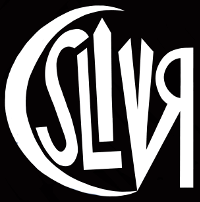E-Comm Analytics
Site increases revenue with analytics.
Overview
An online fashion retailer focusing on fashion forward clothing and accessories for men and women. The clothes shop serves customers globally through its e-commerce website and social media. They have been in business for five years and sought to increase their average order amount and gross revenue.
Analytics Implementation
A comprehensive analytics strategy was implemented to capture and analyze data from its website and social media channels. Analytics tracked website traffic, user behavior, conversion rates, and social media engagement. The business intelligence data was collected and analyzed using Google Analytics, social media tools, and custom-built analytics dashboards.
Insights and Strategy
High-Performing Products
Through product-level web analytics, it was discovered that specific products had higher average order amounts compared to others. These specific products were usually part of bundles or sets.
Cross-Selling Opportunities
The data also revealed missed cross-selling opportunities on the website. Customers who purchased a dress often did not add accessories or complementary items to their cart. By optimizing cross-selling opportunities, additional sales could occur and an increase in average order amount could be realized.
Social Media Engagement
It was also identified that their social media channels had a significant following, but the engagement rate was low. The social media analytics tools determined that customers were asking questions about product bundles and offers. Addressing these inquiries and promoting high-performing products on social media, additional website traffic could occur and boost the average order amount.
Bundle Promotions
A bundle promotions was introduced on the website, combining high-performing products and offering the products at discounted prices. The website user interface was modified to highlight these bundles and make the promotions more visible to customers.
Cross-Selling Optimization
Cross-selling prompts were implemented during the checkout process, suggesting complementary items based on customers’ selected products. Product pages were optimized to showcase related products and incentivized cross-selling through discounts or offers.
Social Media Campaigns
Targeted social media campaigns were launched to promote high-performing products and bundles. Engagement with customers on social media was increased, addressing inquiries, and promoting bundle offers. Social media incentives were introduced to increase engagement through giveaways and contests.
Increased Average Order Amount
The average order amount increased and customers were now purchasing bundled products and complementary items, resulting in higher order values.
Improved Cross-Selling
Cross-selling efforts during the checkout process led to an increase in cross-selling conversions. Customers were adding more complementary items to their carts, resulting in higher average order amounts.
Higher Social Media Engagement
Social media campaigns and engagement led to an increase in website traffic from social media channels. Customers were actively engaging with the retailer, resulting in higher website visits and conversions.
Overall Revenue Growth
The online shopping average order amount increased and cross-selling efforts also resulted in an increase in gross revenue.
